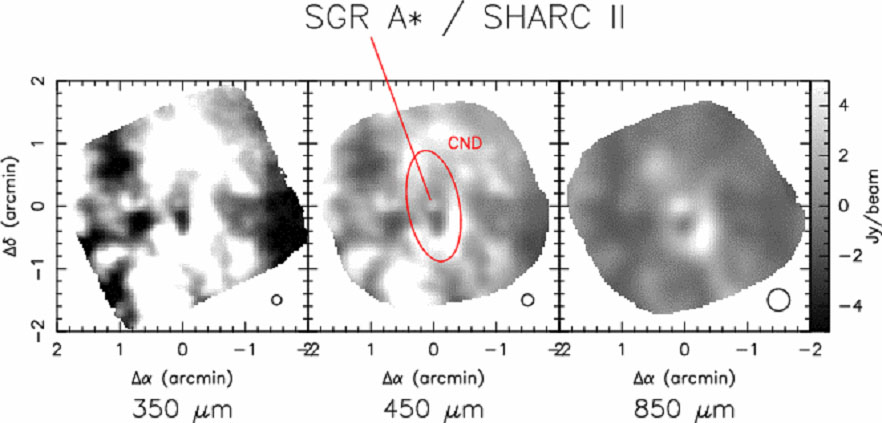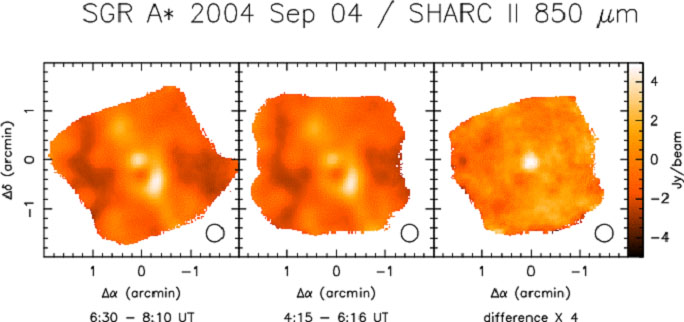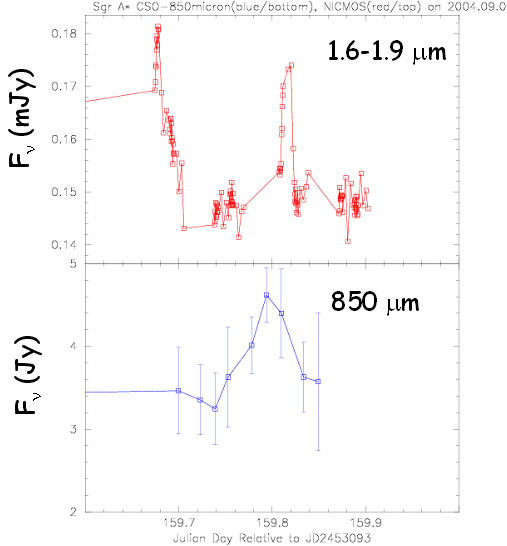
 Flare
activities
towards the Galactic Center Sagittarius A*.
Flare
activities
towards the Galactic Center Sagittarius A*. 
Using the SHARCII camera at the
CSO, a team
of astronomers captured a submillimeter-wavelength flare from the
environment of the supermassive black hole at the center of our Milky
Way galaxy. Known as Sagittarius A*, the medium surrounding the
black hole has been studied for decades at radio wavelengths, where
electrons moving near the speed of light through magnetic fields in the
vicinity of the black hole emit synchrotron radiation. More
recently, it has been possible to study the higher energy electrons
which emit at the shorter submillimeter (450 micron and 850 micron)
wavelengths in which the CSO specializes. Yusef-Zadeh et al.
report a dramatic flare at 850 microns -- one of the first few measured
-- in which Sagittarius A* increased in brightness by 40% within one
hour. The same flare was also seen by the Hubble Space Telescope,
observing at the same time as the CSO at a shorter wavelength
(2micron). The results are to appear in the Astrophysical
Journal in 2006(astro-ph
0510787).

Figure 1. Dust images at submillimeter
wavelengths towards Sgr A* (Dowell et al. 2005).

Figure 2. Dramatic flare activity of Sgr A*
captured at the submillimeter
wavelength (850micron) (Dowell et
al 2005).

Figure 3. Light curves of the flare of Sgr A*
simultaneously captured
at two different wavelength (near infrared (1.6-1.9 micron) and
850 micron)(Yusef-Zadeh et
al 2006).

 Flare
activities
towards the Galactic Center Sagittarius A*.
Flare
activities
towards the Galactic Center Sagittarius A*. 

 Flare
activities
towards the Galactic Center Sagittarius A*.
Flare
activities
towards the Galactic Center Sagittarius A*. 


